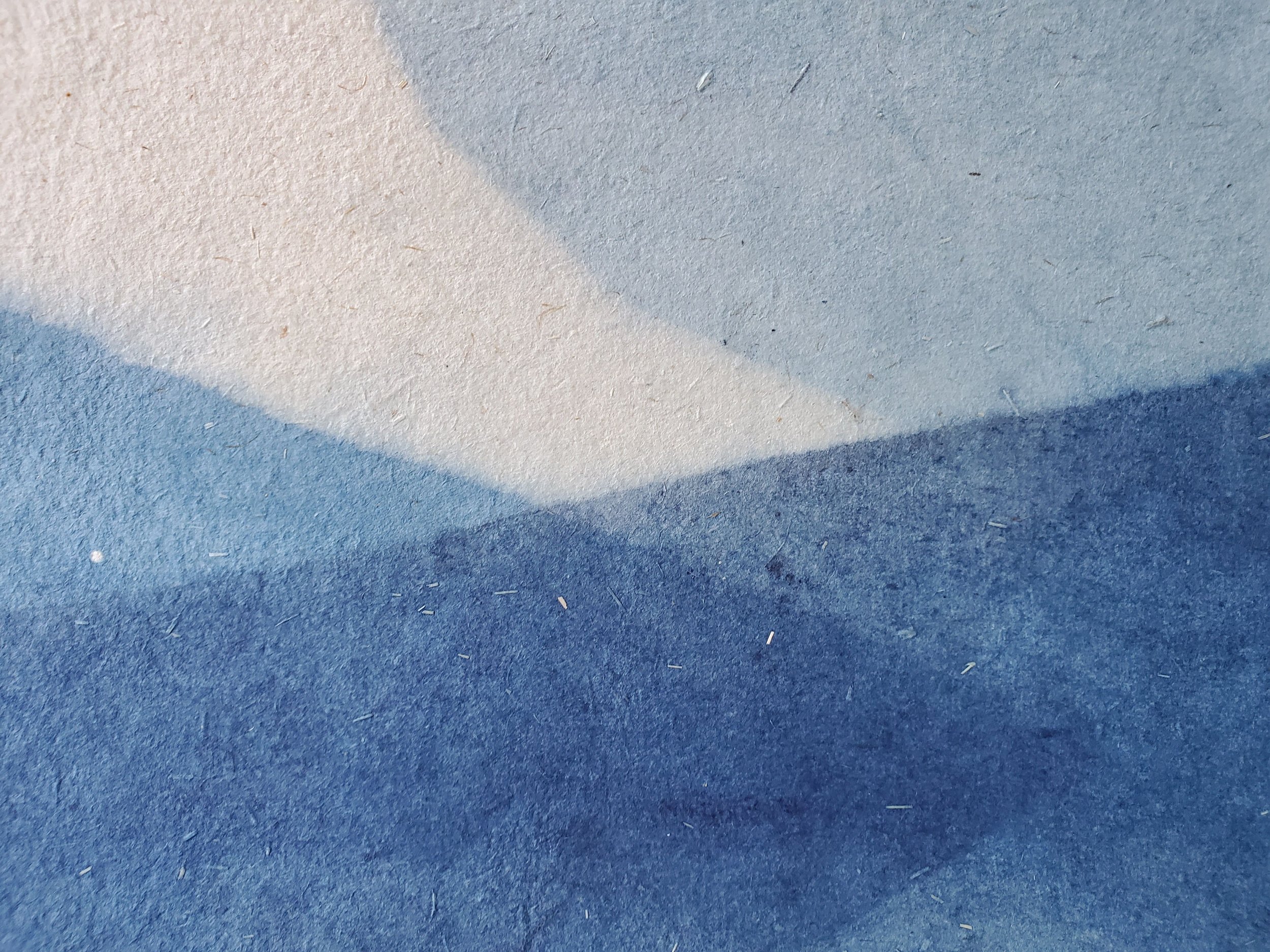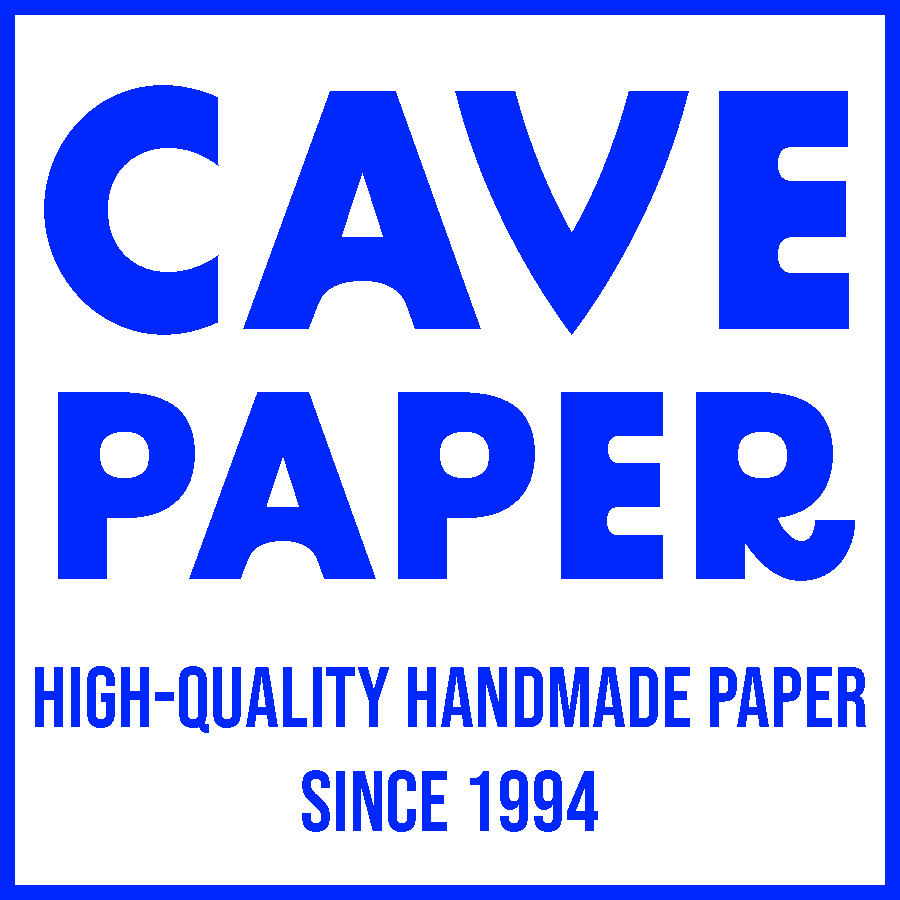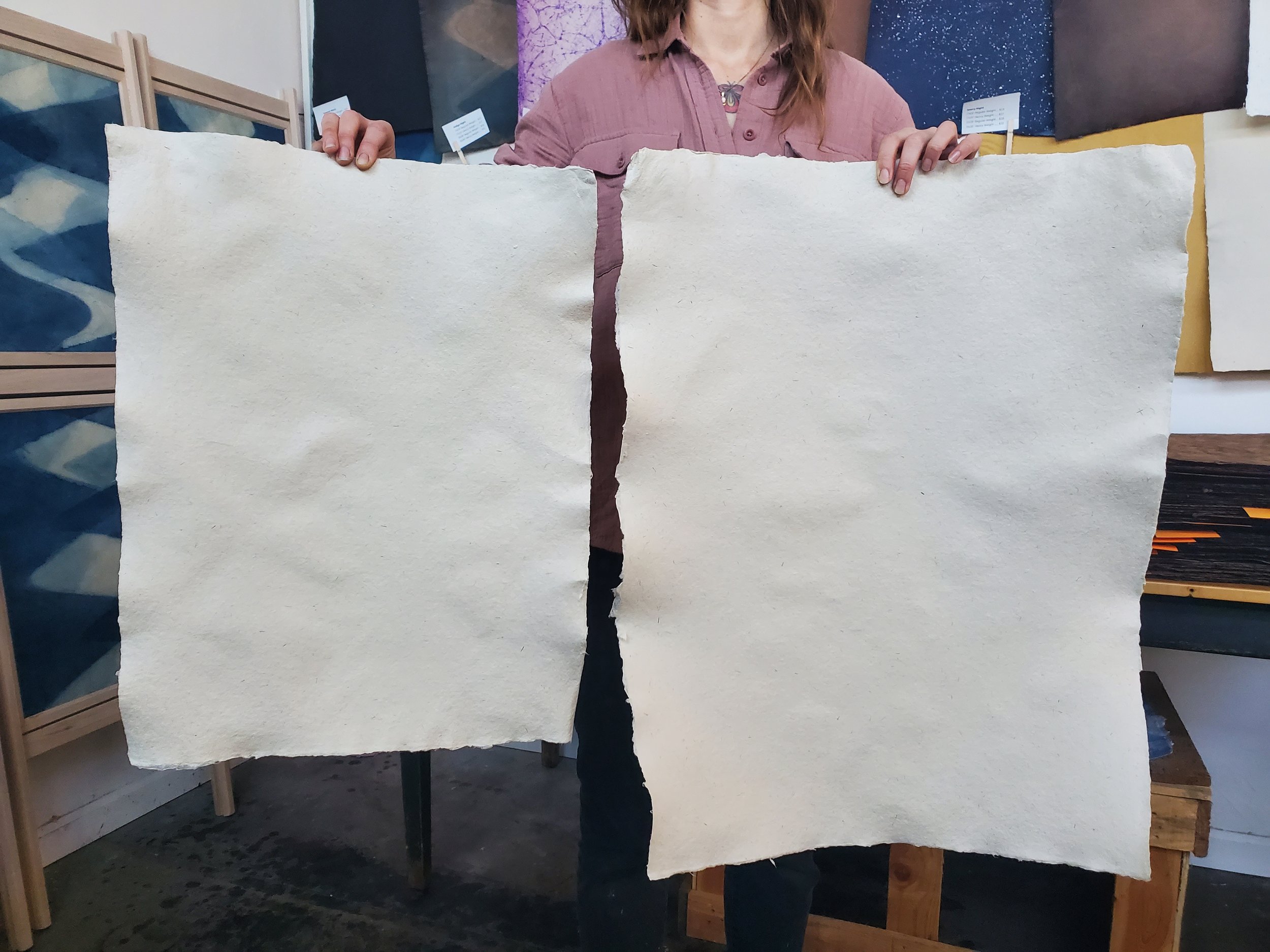
CAVE PAPER
Cave Paper is a handmade paper production studio in operation for over twenty-five years. We specialize in uniquely strong, decorated papers particularly well-suited for bookmaking and used by all types of artists and designers.
Each sheet of Cave Paper is formed and colored by hand. These sheets vary from one to the next, yet retain the same spirit throughout.
We use 100% Belgian Flax in the majority of our papers, with a smaller selection of Cotton Rag sheets. Natural dyes such as Black Walnut, Indigo, and Persimmon are applied individually and in combination to the surface of the sheet in multiple layers. Our catalog also features papers made with pigmented pulp, inclusions, and other unique surface treatments. The process from fiber to finished sheet can take as many as twenty days to complete.
Based in Tucson since July 2020, Cave Paper is owned and operated by Zoë Goehring. Cave was founded by Amanda Degener and Bridget O’Malley in Minneapolis in 1994, and it is an honor to carry on their legacy of producing these papers.
No two sheets of Cave Paper will ever look exactly alike — it is part of the joy of our paper and process!
Our Production Process
Why is Sustainability Important to Cave Paper?
Water is integral to papermaking! And on a production scale, we use quite a bit of it.
When I became the owner and operator of Cave Paper and relocated the studio to my hometown in Arizona, I knew that I would need to prioritize designing new systems around our water use.
How can we use water responsibly and imagine new ways of caring for our resources and environment?
While I am currently able to capture about 200 gallons of grey water from each batch of fiber I process, there are still about 1000 gallons going down the drain.
Goals, Solutions, and Next Steps
At the end of 2021, I participated in SCALE UP, a state sponsored program that is designed to help businesses and institutions gain a holistic understanding of sustainability issues they face, as well as outline steps to improve problem areas.
With the help of this program, I was able to outline my goals regarding water use:
- Capture 100% of Grey Water
- Filter and Treat Grey Water to be Reused in Papermaking Process
In addition to conserving resources, taking these steps is also cost-saving and creates a resilient business model. As I open the studio for tours and workshops, there are also opportunities for community engagement and education around conservation and sustainability.
Currently, we relocate the ~200 gallons of captured grey water to garden basins via a trailer pulled by bicycle. My plan is to install a cistern in the studio with capacity to capture all grey water from fiber preparation and sheet formation. The next step will be to sample and analyze the grey water from flax processing and consider filtration options. Once I have a filtration system in place, I will be able to re-use this water within the papermaking process.

Outcome
Along with the financial benefit of using less city water and creating a system in which my business will become more resilient, initiating these steps will greatly reduce the amount of water used by Cave Paper on a regular basis. As the environmental crisis of water usage and scarcity in the Southwest continues to grow, I am dedicated to creating a sustainable model for responsible water use.
The times I feel the most hopeful about the future of our environment are when I see examples of businesses and individuals implementing sustainable practices and demonstrating how possible it really is. I hope that by working toward my own sustainability goals, I can create an example that will inspire others to look at their own use of resources and imagine new ways of doing so.
Future Projects
~ WATER ~
Moving forward, I would like to initiate a plan with the owner of the building I lease to harvest rainwater. Similarly to the grey water project, I plan to sample and analyze the rainwater to learn what kind of filtration (if any) is necessary for production use. This would cut down even further on our city water usage.
Another aspect of that conversation is collection of data around water use. Currently every unit in the building is tracked by one meter. Ideally, we could sub-meter each unit to better track water use and gain more concrete data.
~ COMMUNITY OUTREACH ~
As I grow my business, I plan to start opening up the studio for tours and workshops. When I have the capacity to take on more production work, I would like to offer the service of recycling shredded office papers. The pulp from these recycling projects would be perfect for teaching classes and could be a great opportunity to work with schools. Students could have the experience of transforming used paper from their school into something new, with their own hands.
Tips and Insights
I am very lucky to have access to a program like SCALE UP in my state. My biggest tip is to seek out these organizations and resources within your community that will help you set sustainability goals and outline the steps necessary to achieve them.
Initiating an audit through the municipal department (for water, electricity, etc.) is a great place to start. From there, you will have a more concrete idea of areas to focus on and improve.
To be honest, feeling hopeful about the future of the environment can be a real challenge at times. That said, I always feel hopeful when I hear others talking about the changes they are implementing and their own goals regarding sustainability. Often these systems involve creative design solutions and inspire a playfulness and thoughtfulness that I find particularly energizing.
Thank you, Sustainable Earth
for supporting the next phase of Cave Paper’s water conservation journey!













